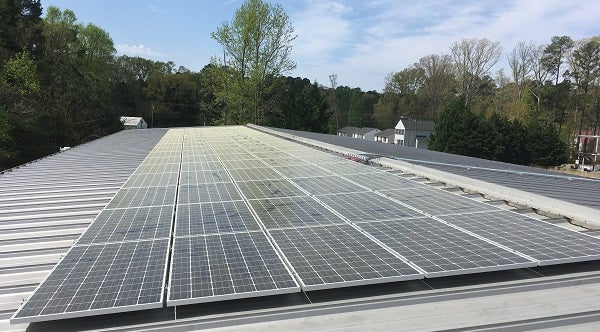Why a proposed bailout of coal and nuclear could make it harder for you to go solar

The solar revolution is happening now. There is dramatic growth in rooftop, community, and utility-scale projects all around the country. As the cost of distributed solar and other renewables have declined, clean energy is beginning to displace more expensive electricity fuels like coal, nuclear, and even natural gas.
Unfortunately, last month the Trump Administration took a controversial step to interfere in this inevitable transition. It announced plans to require utilities to buy power from uneconomic coal and nuclear power providers for two years. This move would drive up costs for ratepayers by as much as $35 billion per year. Another estimate pegs the per customer costs of the plan at about $500 per year.
“This is bad news for those who care about solar, said Cathy Kunkel of IEFFA. “It will waste ratepayer money on bailing out old and expensive power plants, instead of investing that money in the transition to decentralized power that we desperately need.”
This plan has generated heated opposition from all circles, from libertarians, conservatives, and consumer and environmental protection advocates, to natural gas and oil interests like the American Petroleum Institute.
“Conservatives don’t believe in picking winners and losers,” said Debbie Dooley, head of the Green Tea Coalition, a group of Tea Party members supportive of renewable energy.”
The Administration’s stated reasoning for taking this step parrots debunked arguments that have long been used by solar opponents. The Administration claims that its bailout is necessary to address the “emergency” of grid reliability as these aging power plants go out of business. It wants to invoke the emergency powers under Cold War-era laws that permit the government to nationalize parts of the power sector.
But not many people buy this argument.
The grid operator, PJM, where most of the affected coal and nuclear plants operate says there is no reliability emergency. This is a position shared by the North American Electric Reliability Corporation, the federal body responsible for power reliability, as well as the Federal Energy Regulatory Commission (FERC). FERC unanimously rejected an earlier version of the administration’s plan. (Ironically, solar advocates know that distributed solar makes our grid more reliable and resilient while lowering costs for all).
“If our government were serious about real reliability, they would be promoting investment in decentralized power,” Kunkel said. “Examples from New York after Hurricane Sandy and from Puerto Rico after Hurricane Maria show that it is microgrids and generation located close to load that provide real reliability in the event of a disaster, not old coal and nuclear plants.”
Next steps for the administration’s plan remain unclear, Kunkel said. This particularly true given the opposition the plan has received from both FERC and from PJM.
“I find it very hypocritical that some of the very same folks that criticized President Obama’s bailouts, are supportive of bailouts of their preferred industries,’ Dooley said.
